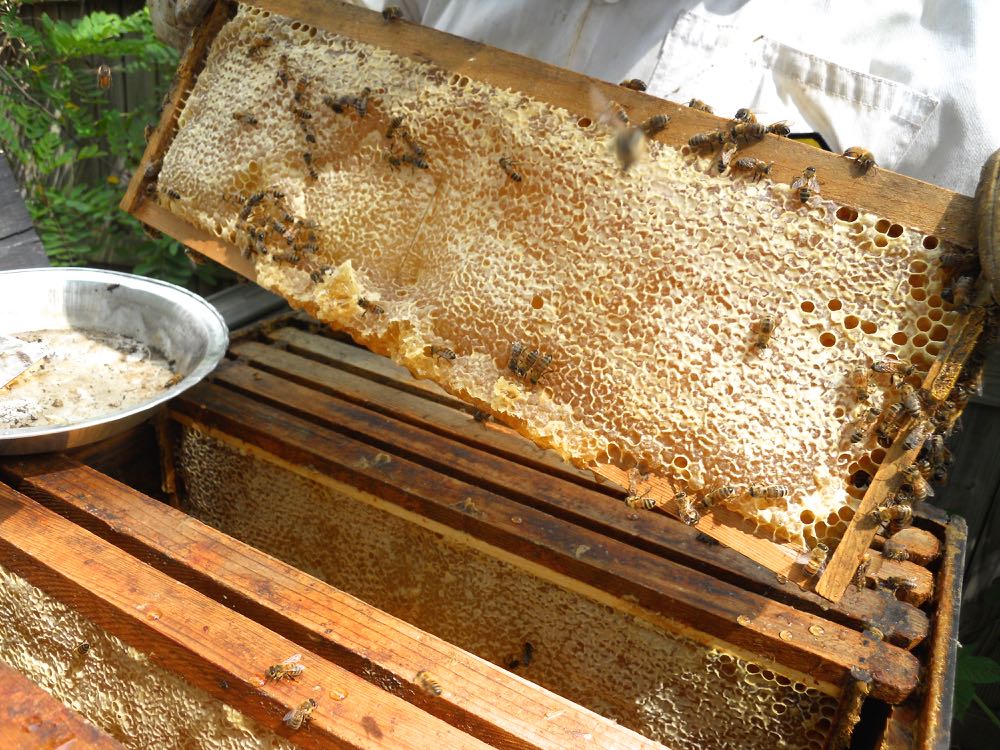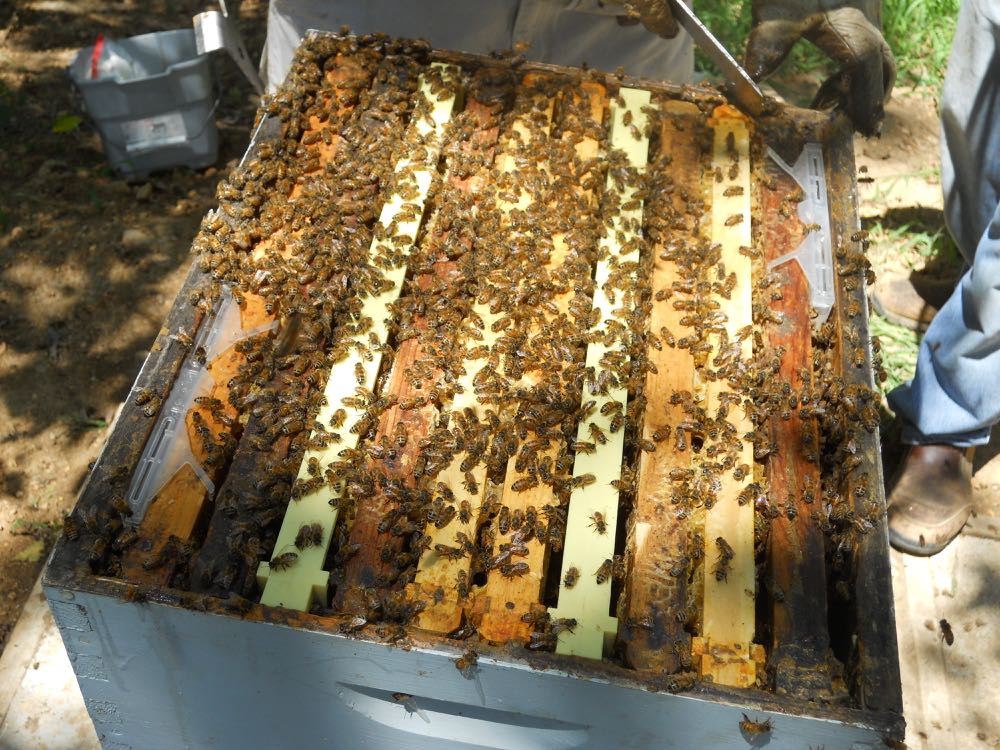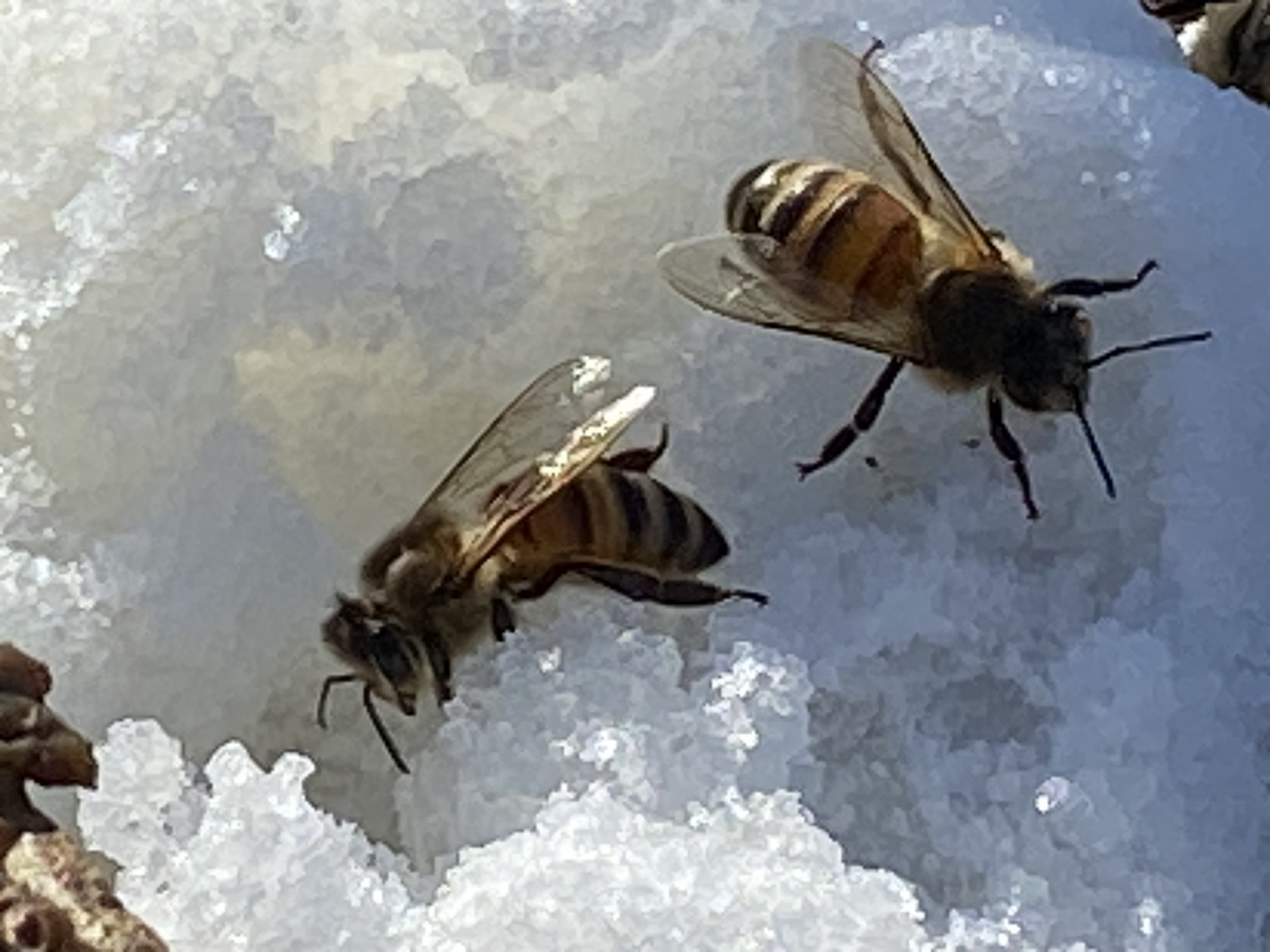Do My Bees Need Room?
/Inside an 8-frame hive body with a newly-installed swarm. When will they need more room? (Photo by Charlotte Ekker Wiggins)
Do My Bees Need Room?
One of the most daunting challenges for new beekeepers is deciding when to add space to a hive. Over the years, beekeeping students have asked for help in looking into their hives to determine if it "is time." It's an important question because too much room and sub-Sahara African small hive beetles could easily take over unchecked. Too little space and the colony will start building swarm cells and moving out every time a new queen hatches.
In the top photo is a newly-caught swarm installed into an 8-frame deep hive body. Bees are covering about half of the frames so here are the signs your hive needs room:
1. Space to Grow. When bees are covering 80% of the frames. For an 8-frame hive that would be 6 frames; for a 10-frame hive they should be on 8 of the 10 frames.
This brood frame has been filled with nectar, taking up all of the room where a queen could lay. (Photo by Charlotte Ekker Wiggins)
2. Laying Space in the Right Place. In other words, check your frames to make sure your queen has space to lay. Often as the nectar starts flowing, worker bees will stash nectar away in every nook and cranny including the brood chamber, taking laying space away from the queen. In photo is a brood frame filled with nectar, leaving the queen with no room to lay eggs.
If you find most of your frames in the brood chamber filled with nectar, take 2 frames out and place them in the box above. Replace the frames you moved up with new frames, preferably with drawn comb so the queen has room to lay.
Frame packed full of nectar than can be moved to a top box and replaced with empty comb. (Photo by Charlotte Ekker Wiggins)
3. Spot Difference Between Drone, Brood and Honey Frames. They can look very similar but there are distinct differences.
This is a frame of primarily drone brood, it looks like pencil erasers sticking up out of the comb. (Photo by Charlotte Ekker Wiggins)
Drone brood looks like bullet casings, or pencil erasers sticking up out of the comb. By comparison, regular capped brood is flat and even with the comb. In the photo, drone brood is in the center and flat, capped brood is on either side of the frame.
Frame of capped honey, ready for a long winter's night. (Photo by Charlotte Ekker Wiggins)
A frame of capped honey can be in a variety of shapes, some are straight against the frame, others stick out because the beekeeper didn't keep the frames close together. Regardless, capped honey is easy to recognize once you start seeing the differences.
4. Now for a test. What do you see in this frame?
Left, capped brood; center, bee bread; towards right, open larvae so your queen is laying! (Photo by Charlotte Ekker Wiggins)
If you look closely at this frame, you can tell the drone cells sticking out towards the top compared to sealed brood flat against the comb. Some cells also have uncapped nectar, bee bread in a variety of colors, and a sure sign your queen is laying. So what do you think, does this colony need more room?
This queen cup (empty) was once a queen swarm cell when it was occupied. (Photo by Charlotte Ekker Wiggins)
5. Check for Swarm Cells. When a colony needs room, they will build queen cells to raise a new queen so the old queen can leave with 1/3 of the colony and establish themselves in a new home. First raise the box and check underneath, see any peanut-like protusions at the bottom of the frames? Those are queen swarm cells.
If the queen cups or cells are in the middle of the frame those are supercedure queen cups or cells. For some reason, the worker bees are raising a new queen in that center queen cell to take over for the existing queen.
Is the swarm cup or cell at the bottom? Is it filled with a white substance? That's royal jelly and the worker bees are building a new queen.
Is the swarm cup at the bottom uncapped and empty? That means a new queen has hatched and perhaps already swarmed.
Frame with little to no activity except for signs of wax moths. Your colony is in trouble. (Photo by Charlotte Ekker Wiggins)
6. Sure Sign of Trouble. If when you look through your frames you don't see a lot of filled cells, keep looking. Wax moths will move in when a colony is in trouble so if you see their web-like filament running through cells, your colony is in trouble. Maybe you lost your queen so go back through the frames assessing the rest of them. Remove the empty ones, move your colony into a smaller box so the remaining bees can protect the colony and start asking around for anyone who has a new queen.
Brood box of a ten-frame hive with small hive beetle traps in each of the opposite corners. (Photo by Charlotte Ekker Wiggins)
What are you think about this hive, does it need a super?
Charlotte




















